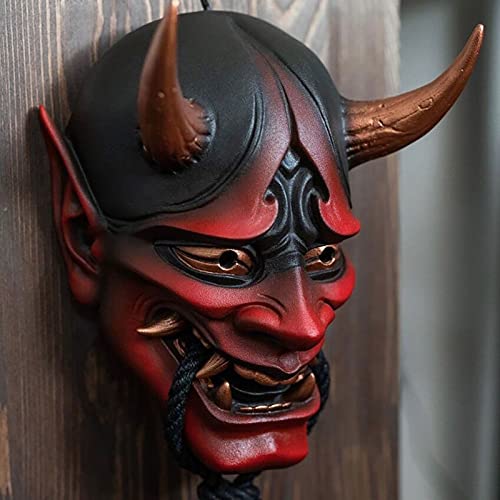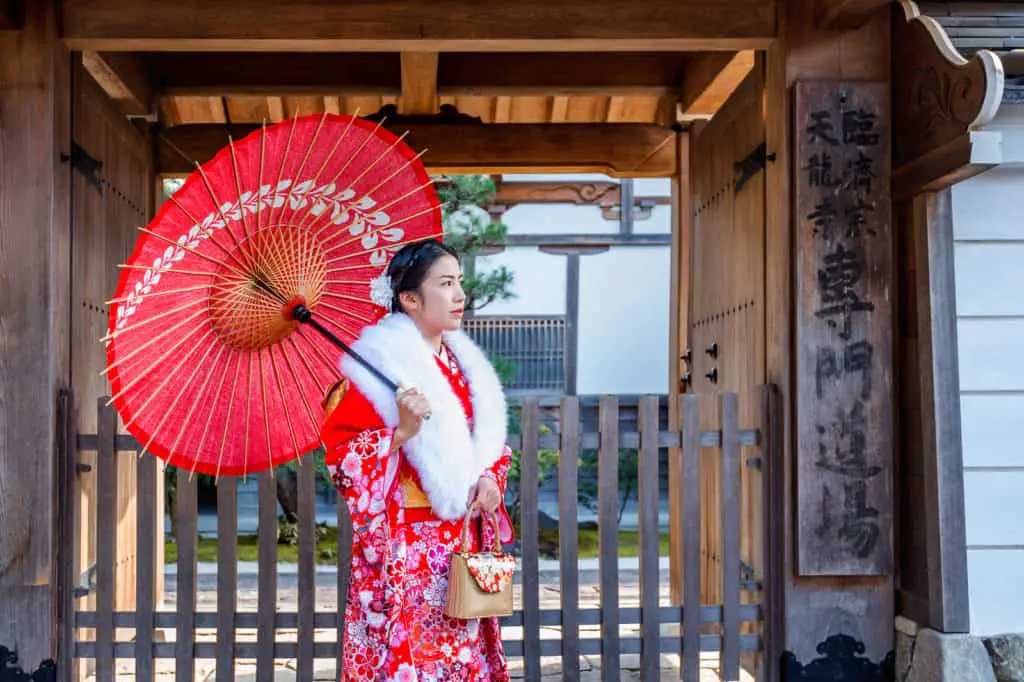
- What is Japanese festival clothing?
- Traditional Japanese festival clothing
I love Japanese festivals.
At university in Japan, I even managed to find a matsuri-bu or festival club that would travel out to various Japanese festivals to dance, watch or just hang out.
I recently went as far as creating a searchable list of more than 1000 festivals across Japan.
Many countries around the world have their own traditional clothing for special occasions, but Japan has some of the most diverse and festival clothing.
Interestingly, much of the festival attire is very much based on the clothing of the people, such as the momohiki pants, geta sandals or hachimaki headbands used to keep the sweat from people’s brows when working.
And this is actually one of the things I love most about Japanese festival clothing – that it is all pretty much intended to create a sense of classless unity amongst those who put it on. In a hierarchical society like Japan, putting on these traditional clothes puts the CEO and the country labourer on an equal footing – at least for one day.
This equalisation of festival participants is taken to the nth degree in festivals where people put on masks, meaning that their everyday identity has been all but erased. Japanese festivals, and the clothing worn at them, enable people to take a holiday from themselves.
The traditional Japanese festival attire can be everything from exceedingly simple through to outfits composed of many layers of clothing, including women’s hairstyles that can take hours to create.
For festivals celebrating spring, summer, or autumn there are different rules for what to wear.
In fact, this is even true of everyday clothing in Japan. My partner is always complaining to me about how people look at you funny in Japan if you, say, wear a long-sleeved shirt on a cold day in late spring, or wear sandals on a warm day in early winter.
What is Japanese festival clothing?
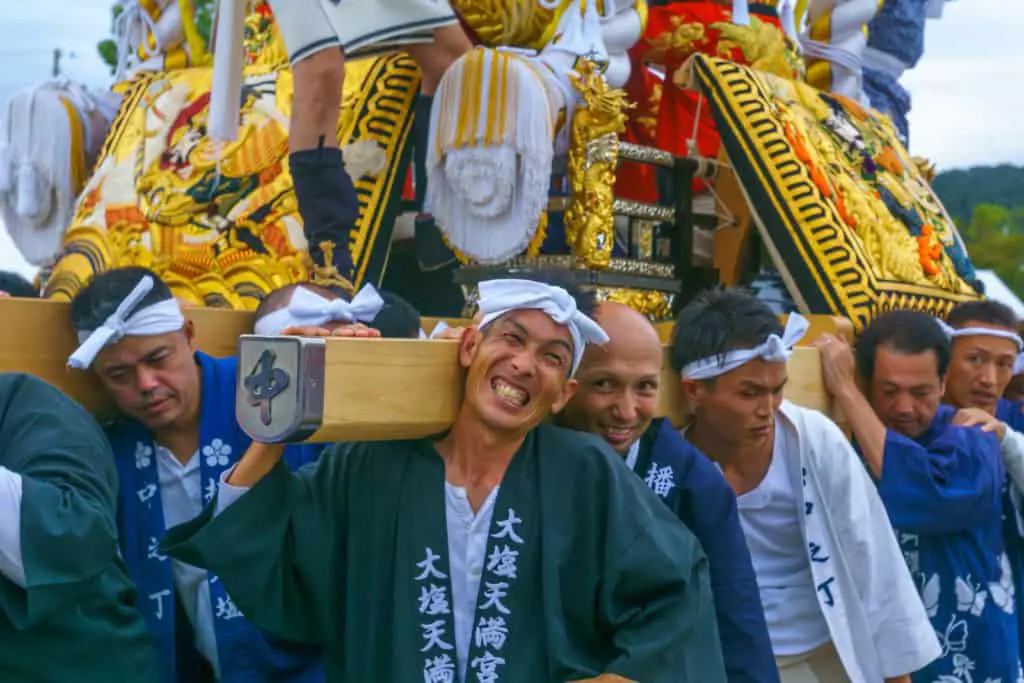
Festival clothing worn in Japan is usually colorful and often includes traditional Japanese costumes and accessories such as obi belts and headbands.
On the whole, though Japanese festival clothing can be very colorful and decorative, the dominant colors are red and white. These colors are considered symbols of purity and auspiciousness in Japan. This is most strikingly seen in the kouhakumaku 紅白幕 red and white hanging clothes you see prominently at festive occasions.
Japanese festival clothing is inextricably wound up with the honoring of the traditional gods of Japan – Shinto Kami. I’ve written before about the many types of Shinto symbols that exist in Japan.
There are many different types of festivals throughout the year in Japan, but the most common ones are the summer festivals. These festivals are held on different dates according to the local calendar.
Examples include Obon Festivals which celebrate the departed spirits of family members. One of the most popular Japanese festivals, Obon, is a celebration of ancestors and takes place around August-September. During this time, many people will wear their best festival clothing to honor their loved ones who have passed on.
Designs on the clothes may include regional symbols or designs from nature that have symbolic meaning in Shinto
I’ve listed the main items of Japanese festival clothing in detail below.
Japanese male festival clothing
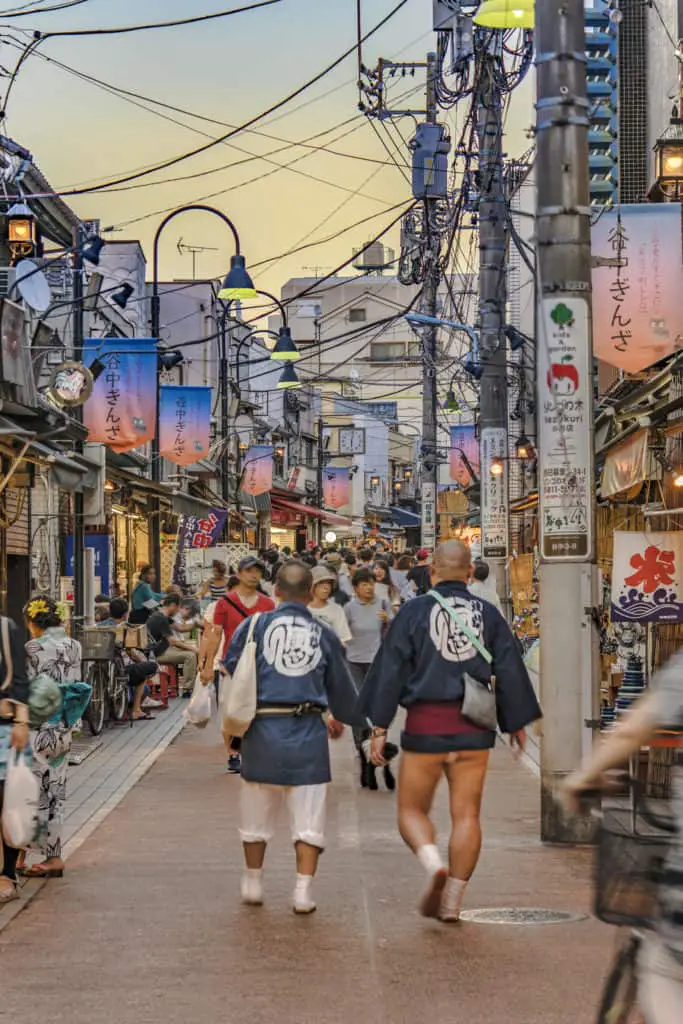
There is something very masculine about a lot of the clothing that blokes wear at festivals in Japan.
I remember the young men that were members of the “Matsuri-bu”, “Festival Club ” at the university I went to in Japan. They would put on fundoshi loincloths and happi loose fitting coats, maybe a pair of white tabi – and generally not much else.
In fact, showing a bit of flesh is a bit of a theme at a lot of the Japanese festivals I’ve been to.
If you’ve got it, flaunt it, they say.
They may have equally well said, “If you’ve got it, celebrate it at a traditional Japanese festival.”
If you’re a man going to a Japanese festival, you mainly have two options: a yukata or a jinbei.
Either of these are good options, with the yukata being more formal and the jinbei being more casual.
You can also check out my post on male kimono.
Japanese Female festival clothing
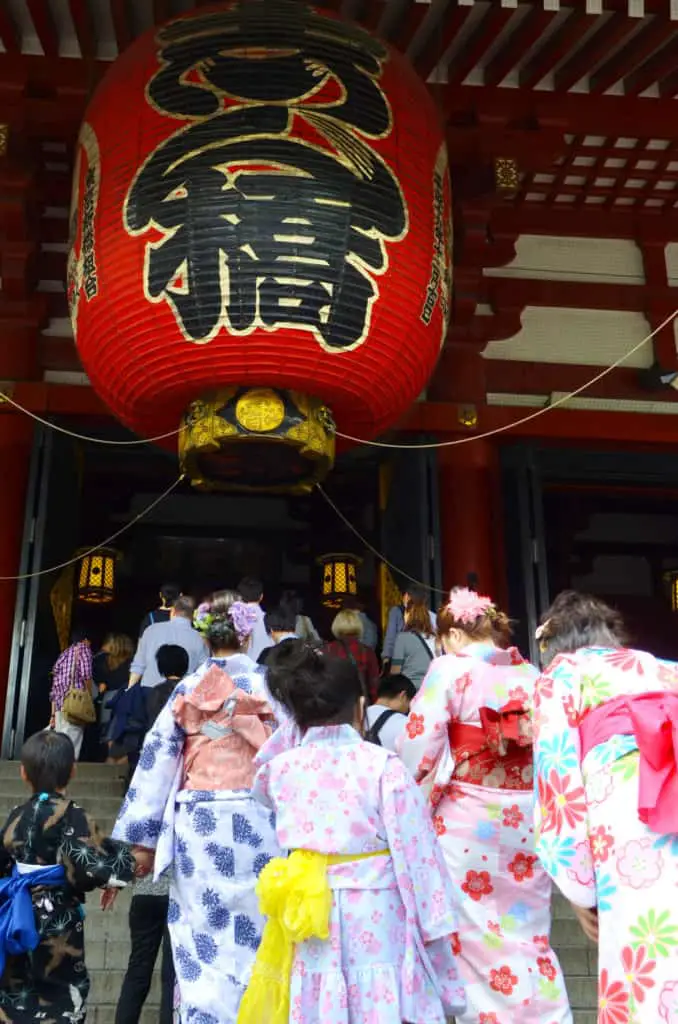
Japanese females are known for their elaborate festival clothing, often with intricate embroidery and designs. Traditionally, Japanese female festival clothing is colorful with a focus on traditional fabrics, such as silk or cotton.
The most common female festival clothing is the yukata, being a casual, single layer robe-like cotton kimono.
Some women go to town with their outfits and put on a full-blown, multi-layer kimono. They are usually worn over an undergarment called a juban. These garments are designed in many different colors to match the specific occasion.
Traditional Japanese festival clothing
Full Body Japanese Festival Clothing
1. Yukata
kimono vs yukata
Many people are confused between a more formal kimono and a more casual yukata.
In fact, they are right to be confused. The word “kimono” is one of those words that can be used in a general sense or a specific sense. “Kimono” literally means “something you wear”, and traditionally referred to all clothing.
Over time, “kimono” has also taken on the meaning of “a formal Japanese robe-like garment”.
The difference between yukata and other types of kimono, is that kimonos are made from silk or synthetic fibres, while yukatas are traditionally made from cotton, linen, or ramie. Yukata are usually much more simple, single layer affairs.
Kimonos are used for formal occasions, such as weddings and introductions to the Emperor of Japan. Yukatas are used for more casual occasions, such as going out to dinner at a restaurant.
There are a lot of rules about how a kimono should be worn, so they tend to be intimidating for a lot of women – Japanese or not. Yukata are a lot simpler, and easier to get on and off.
In Japan, the most common traditional clothing worn during a festival is called Yukata. There are many types of styles and fabrics that are used for this piece of clothing. From silk, to cotton, to polyester blend, there is something for everyone. For men, the most popular style is either red or blue. Women often wear colorful Yukatas with floral designs.
2. Jinbei
A jinbei is a two piece garment that has a wrap-around, string-tied upper jacket and a pair of shorts beneath.
They are a great, versatile garment that can be worn in a range of situations including going to a festival, going to and from hots springs and bathes, or used as pyjamas. That can be worn as home wear, or for going out.
They are light and breezy. In summer, I pretty much live in my jinbei!
Upper Body Japanese Festival Clothing
3. Happi
The traditional Japanese fashion, a happi is a type of coat that is often seen on people during festivals or other celebrations. In Japan, it is more generally worn by men, but women often get their happis on too.
4. Hanten
In Japan, a Hanten is a type of robe that is typically worn in the winter by both men and women. These robes come in different lengths including thigh-length or floor-length. When worn over a kimono, the robe is called a “mawashi”, which is a word that means “at the waist”. When worn with a yukata, the robe would be called a “yukata ni” which is a word that means “at the neck”.
5. Haragake
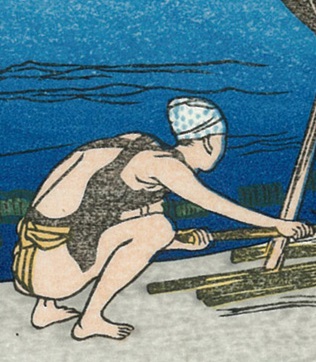
Haragake were traditional work-wear aprons worn by people such as carpenters and fire fighters, either over other clothing or directly on the skin.
This kind of manual labour is more associated with men than women, so they tend to have quite a masculine, no-nonsense look to them.
In modern times, they have come to be associated with Japanese festival clothing as garments that are worn in activities that require strength or manual effort. Probably the most famous example of which is Japan’s iconic Taiko drummers which often don the Haragake.
The simple, unadorned cuts of the haragake match well with the pure simplicity of the act of striking a drum.
Haragake leave the arms and shoulders completely free to move, which is obviously an advantage when drumming, or performing any other task that requires both dexterity and power.
6. Koikuchi Shirt
The Koikuchi shirt is a collarless, three-quarter or short-sleeved button-up shirt. The word koikuchi means “carp-mouth”, and if that’s not enough to make you like this garment, I don’t know what is!
The shirt gets its name from the open sleeve-ends, which apparently look like a big ol’ carp-fish with a gawping mouth. How accurate this is, I’ll leave to the zoologists to decide.
In some regions, the shirt is called a 肉襦袢 nikujiban or nikujyuban, which, exquisitely translates as “Meat-Leotard”.
The cut of a Koikuchi shirt is such that the fabric hugs the body in a streamlined way, making it possible to have patterns that appear similar in effect to body tattoos.
The Koikuchi is generally made of a light towel-like cotton material. It absorbs sweat and dries quickly, making it a good choice for wearing at a hot and sweaty festival.
Because Koikuchi shirts originally imitated body tattoos, you can find many designs for these shirts based on traditional Japanese tattoos.
Not bad if you want to look like a tough nut, but you only want to do it for the day of the festival.
More modern designs use all sorts of inspiration, including aloha shirt-like patterns and bold colors.
Because these shirts can be pretty bright and bold, they have more recently become common festival costumes. You also see them at shops or being used as uniforms for restaurants at traditional Japanese restaurants.
You also see gangsters wearing these in combination with suteteko in Yakuza movies of old.
Lower Body Japanese Festival Clothing
7. Momohiki
Momohiki are a type of traditional Japanese long-panted underwear. They are also sometimes called Matabiki or Matahiki.
They take the form of tight-hugging trousers that span from waste to ankle and feature a drawstring at the waste.
Interestingly, these pants are said to have originated from a Portuguese garment imported in the 16th century.
In the Edo period, Momohiki became work clothes for tradesmen and farmers and were commonly worn as Koikuchi shirts and haragake.
If you really want to appear “salt-of-the-earth”, in a kinda old-fashioned way, then momohiki with haragake is the killer combo.
Footwear Japanese Festival Clothing
8. Tabi
Japanese tabi are traditional Japanese footwear that are somewhere between a sock and a shoe and are distinguished by the big toe being split off from the rest of the garment.
There are several types of tabi, some of which are worn with zouri or setta, traditional Japanese sandals.
Other tabi, such as the distinctive long black jikatabi you often see workmen wearing, are worn as shoes themselves.
Tabi are worn by both men and women.
They may consist of a cotton, silk, or synthetic cloth sock which covers the top half of the foot and comes to a point at the front. The separation between the two toes is generally achieved with a “thong” that stretches from one side of the shoe to the other. Tabi are worn with traditional Japanese clothing such as kimono, happi coats, and hakama.
They are also commonly seen as accompaniment to traditional Japanese festival clothing.
9. Zouri
The Japanese zouri (“sandal”) is a type of footwear with straps that typically consists of either an upper made from straw or reeds, with a sole made from leather, wood, rubber, or plastic.
The kanji that make up “zouri” 草履 literally mean “grass-wear”.
Zouri are made by hand, with both the upper and sole being woven. Zouri commonly come in a single color, but the weaving technique allows two colors to be made.
Often the design variation is due to the weaving pattern used and color combinations can vary from light to dark, to a gradient.
Zori are often worn on holidays for religious reasons and at festivals. They may also be worn by Buddhist monks.
10. Setta
Setta are a type of zori bamboo-skinned sandals with leather soles that are designed to be particularly durable and water-resistant. They have an iron buttock on the heel of the skin that makes them remarkably strong.
Speaking from experience, the little bit of iron placed in the rear of the sole also produces a pleasing tapping sensation when you walk.
If you are after traditional Japanese footwear that lasts, but can be worn more formally than something like jikatabi, this is the one.
11. Geta
Geta is a type of Japanese raised clog that is worn by both men and women. They are often seen worn by women who wear kimonos for special occasions or festival days.
They are outdoor footwear consisting of a wooden sole connected to a platform by short wooden pieces.
The distinctive shape of the shoe serves to raise the height of the wearer, so they are great for shorter people that want to get a bit more altitude (great for seeing the mikoshi over people’s shoulders at a crowded matsuri).
They are generally fairly simple constructions consisting of a flat piece of wood, straps and wooden blocks beneath to raise them up. You do see more sophisticated geta with tapering, different levels and contour. But I reckon if you’re going to wear geta, why not keep it simple?
12. Waraji
Nothing screams “peasant clothing” like a pair of waraji sandals.
Japanese waraji are traditional straw sandals. They are made of rice straw, and there is no sole, which allows the wearer to feel the ground under them while walking (it doesn’t get more “hippy” than that!).
The waraji were traditionally worn at any time, but in modern Japan they are mainly worn during the summer months (try wearing a pair of straw sandals in the snow and see how much fun you have).
These traditional Japanese sandals have been worn from ancient times to the present day.
They come in various thicknesses and lengths.
The use of waraji as footwear is one tradition that has made its way into modern Japan for ceremonial occasions and festivals.
They were traditionally the main type of shoe worn by farmers and those working outdoors.
Headwear Japanese Festival Clothing
13. Hachimaki 鉢巻 (Headband)
Hachimaki is the traditional headband for Japanese workers.
Because of their association with work, effort and working up a good old sweat, they have become something of a symbol of dedication and determination. The hachimaki is often seen in anime depictions of laborers working in construction, manufacturing, or agriculture, so might be familiar to all you otaku types out there.
It can even be found among sumo wrestlers who wear them during training sessions.
Japanese headbands are usually made of cotton or linen and come in countless colors. At festivals, as in work situations, they are good for keeping the hair back and sweat off the face.
The word hachimaki 鉢巻 literally means a “hat-wrapper”, and refers to the type of hachi conical hats you see in rice fields across Japan.
Masks
I find the wearing of masks at Japanese festivals intriguing.
In such a hierarchical culture, a mask can hide one’s identity, and their social status. Masks can allow people to enjoy themselves without worrying about what others think about them.
The mask is the great social leveller.
A mask can also be seen as a representation of our identity, or another person’s identity. They can be an external manifestation of our own feelings or used to represent traditional legends and myths in Japan.
Masks are called “omen” in Japanese. Some omen are worn by adults, while others are for children. Japanese masks can be made out of paper, wood, leather, plastic or thin fabric and look anything from scary-looking to comical. Many were traditionally made of lacquer on a wooden base.
There are many different types of masks from lions to demons to foxes. Some masks are very elaborate and even have detailed features like hair and eyes (rather disturbingly), while others are simpler with few details.
To take a look at some of the more common masks seen in Japanese festivals:
14. Hyottoko Masks
He makes for a comical, ultra-ridiculous looking mask.
The Hyottoko presents a man with a puckered, bent look on his face.
The size of the left and right eyes may be different, and he usually has bulging cheeks.
The jolly Hyottoko forms a pair with the equally genial female “okame” (Otafuku).
Hyottoko often appears in festivals as a clown-like figure.
There are numerous “hyottoko-odori” festivals around Japan where people don a Hyottoko mask and shimmy through the streets.
15. Okame Masks
Okame forms a couple with the hyottoko and is the wholesome, prosperously simple looking Japanese everywoman.
Her mask has a round face, a low nose, a small forehead, drooping hair, and big chubby cheeks.
The word “Okame” has a double meaning with the “kame“, meaning “turtle”, which is a common symbol of good fortune in Japan.
Okame also gets called Otafuku and can also be seen in Bunraku and Kyogen performance forms.
It is common for women to put on an okame mask to dance at festivals in Japan.
16. Oni Masks
Japanese oni masks are used in Japanese folklore to scare away demons, or in some cases- they are used to honor them. Typically they have a fearsome appearance that may be decorated with red hair, horns, and long fangs, but some oni masks are more playful in appearance.
17. Hannya Masks
The masks of the Hannya play a significant role in the theater and dance traditions of Japan. The masks represent a very specific type of female demon that is characterized by their rage and anger, and they help to convey the intensity and depth of emotions that were played out on stage. The masks were used as a performance art form to convey the power and consequences of love; this was seen as a way for performers to depict their own inner emotions through storytelling.
The Japanese Hannya Masks are used for Noh theatre performances, dance, and religious ceremonies. The masks usually portray the spirit of a jealous woman who has been wronged by her husband.
18. Kitsune Masks
Japanese kitsune masks are typically seen at festivals across Japan.
Since the earliest records of Japan, foxes have remained a prominent figure in Japanese culture generally. Many folk tales and stories feature kitsune (foxes) as symbols of intelligence and wisdom.
Kitsune are thought to be shape-shifters; they can change their appearance at will.
The masks often depict stylized foxes that have large pointy ears. Some masks may also include red markings around the eyes, which give the impression of magical power.
Accessories Japanese Festival Clothing
19. Tekkou (Tekou)
Tekkou is a type of hand protection that is worn over the knuckles that were developed in Japan.
They are made of leather or cloth that is worn from the upper arm to the wrist and back of the hand to protect the skin and body from grime, physical impacts, cold, and sun.
When fixing to the wrist, a string or a kohaze is used. This string will commonly be fixed to the back of the hand through a ring sewn on the middle finger.
These gloves, or arm wear, have a long history, and tekkou have also been used as a form of armour against swords and other Japanese Weapons.
20. Fundoshi
The fundoshi is a traditional type of clothing worn in Japan, often by males. It is a loincloth made from cotton or silk and fits around the hips. One might also wear a fundoshi underneath their clothes for modesty purposes.
Fundoshi are made from a length of cotton fabric.
They have been around for centuries and are still well-known in Japan today.
This garment is typically worn with nothing else except for a sleeveless undershirt or robe.
21. Tenugui
Tenugui are Japanese towels that are highly versatile and used in many different ways throughout the country. They are a lightweight cotton cloth that is typically tied around the neck to protect from heat. It can also be worn as a headband, an arm band, or a belt. Tenugui can even be used as dish cloths, dinner napkins, food wrappers, or even to strain spices or herbs.
That’s a lot of bang for your buck right there.
This multi-functional cloth was originally used by farmers in Japan to wipe sweat off their brows or dry themselves off after bathing. They were later popularized by the samurai class and enjoyed a resurgence during the 1990s when they were popularized by hippies and travellers of various cultures.
22. Kasa
Kasa or umbrellas are often used at Japanese festivals for shade and protection from the elements, and they vary in size and style. They can be plain colored or decorated with patterns.
It is unknown when the umbrella was introduced to Japan, but it is said that an umbrella used for Buddhist altars was imported to Japan from present-day Korea during the time of Emperor Kinmei in the 6th century.
In Japanese umbrella construction, the shaft and rods were traditionally made mainly from bamboo, and the umbrella cloth was coated with persimmon tannin, flaxseed oil, tung oil, to make it waterproof.
These traditional umbrellas, or parasols, are quite exquisite pieces of craftsmanship and are often used by festival visitors both to ward off the harsh sun, but also to conjure up an image of refinement and nostalgic grace.
23. Ougi
Ougi is a type of fan that has been used in Japan for centuries. It is an essential part of the traditional festival garb, and many festivals have their own unique styles of design or custom handles.
The main use for ougi in Japanese culture is to help keep cool. Ougi are often decorated with intricate designs, so it can be difficult to find one without any embellishments!
Anime Japanese festival clothing
Japanese festivals are a time to enjoy traditional customs and appreciate the culture of the people.
Festivals, and Shintoism more generally, are commonly depicted in Japanese anime and you especially see shrine maiden miko depicted in anime regularly.
Characters clad in Obi, kimono, and haori are all fairly common occurrences in many anime.
Hopefully, this article has given you a pretty good overview of all the Japanese festival clothing that is out there. Perhaps, like me, one day you will find yourself dancing through the streets of Japan in a happi, headband and tabi. And you’ll know exactly what you are wearing!
Japanoscope uses affiliate links, which means that commissions may be received when you click on links to products from partner retailers.


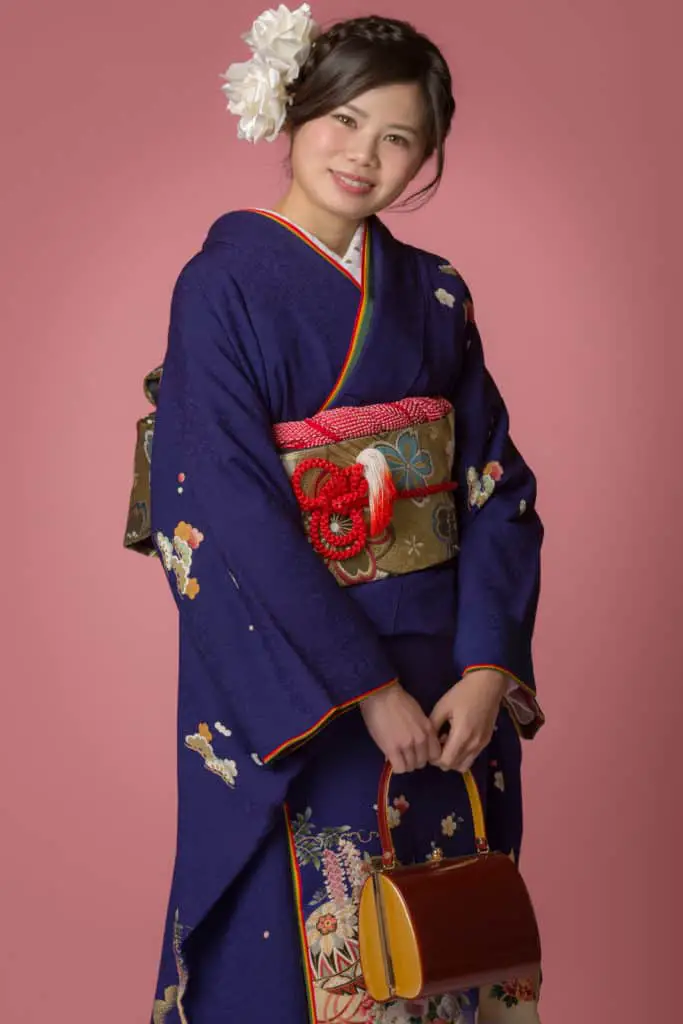





![[Aiai JAPAN] Igusa Setta Japanese Tatami Zouri Sandals (XL, HempLeaf(asanoha)) [Aiai JAPAN] Igusa Setta Japanese Tatami Zouri Sandals (XL, HempLeaf(asanoha))](https://m.media-amazon.com/images/I/41trNrgTcBS._SL500_.jpg)






